-
 Bitcoin
Bitcoin $78,796.9316
-5.04% -
 Ethereum
Ethereum $1,584.9051
-11.62% -
 Tether USDt
Tether USDt $0.9993
-0.02% -
 XRP
XRP $1.9410
-8.76% -
 BNB
BNB $553.6498
-6.34% -
 USDC
USDC $0.9999
-0.01% -
 Solana
Solana $107.0398
-10.16% -
 Dogecoin
Dogecoin $0.1497
-10.76% -
 TRON
TRON $0.2307
-2.85% -
 Cardano
Cardano $0.5764
-11.14% -
 UNUS SED LEO
UNUS SED LEO $8.8563
-2.38% -
 Chainlink
Chainlink $11.3433
-10.33% -
 Toncoin
Toncoin $2.9272
-9.80% -
 Stellar
Stellar $0.2335
-6.68% -
 Avalanche
Avalanche $16.1739
-8.89% -
 Shiba Inu
Shiba Inu $0.0...01130
-7.91% -
 Sui
Sui $1.9334
-11.80% -
 Hedera
Hedera $0.1411
-12.44% -
 Polkadot
Polkadot $3.6844
-6.24% -
 MANTRA
MANTRA $5.9053
-5.59% -
 Bitcoin Cash
Bitcoin Cash $272.1550
-9.31% -
 Litecoin
Litecoin $70.9129
-13.60% -
 Dai
Dai $1.0000
-0.01% -
 Ethena USDe
Ethena USDe $0.9988
-0.03% -
 Bitget Token
Bitget Token $4.1372
-6.76% -
 Pi
Pi $0.6118
4.97% -
 Monero
Monero $199.8023
-6.06% -
 Hyperliquid
Hyperliquid $10.2970
-12.71% -
 OKB
OKB $53.9077
3.94% -
 Uniswap
Uniswap $5.0766
-12.47%
How does NFT Scams alert users to fraudulent activities?
NFT scams exploit the decentralized nature of the market; user vigilance, community reporting, and platform security measures, while imperfect, are crucial for detection, demanding thorough due diligence before any investment.
Mar 03, 2025 at 05:48 pm

Key Points:
- NFTs' decentralized nature makes them susceptible to scams.
- Scam detection relies on user vigilance and community reporting.
- Platforms employ varying levels of security and verification measures.
- Red flags include unrealistic promises, pressure tactics, and unfamiliar platforms.
- Users should verify project legitimacy and contract details before interacting.
How Does NFT Scams Alert Users to Fraudulent Activities?
The decentralized nature of NFTs, while offering benefits, creates fertile ground for scams. Unlike centralized platforms with robust fraud prevention systems, the NFT space relies heavily on user awareness and community-driven vigilance to identify and report fraudulent activities. There isn't a single, universal alert system. Instead, a combination of methods aims to warn users of potential scams.
Platform-Level Measures:
Major NFT marketplaces like OpenSea and Rarible employ various security measures. These may include verification badges for reputable projects, flagged suspicious accounts, and warnings about potentially fraudulent listings. However, the effectiveness of these measures varies and isn't foolproof. Scammers are constantly adapting their tactics.
Community Reporting and Warning Systems:
A crucial aspect of scam detection within the NFT community is the collaborative reporting of suspicious activities. Social media groups, forums, and dedicated websites often serve as early warning systems. Users share information about scams, helping others avoid similar pitfalls. This collective intelligence forms a vital layer of protection.
Identifying Red Flags:
Recognizing potential red flags is paramount in avoiding NFT scams. Several indicators often signal fraudulent activity. These include:
- Unrealistic promises of high returns: Be wary of projects promising unrealistic gains or guaranteed profits.
- High-pressure sales tactics: Legitimate projects rarely employ aggressive sales tactics. If you feel pressured to invest quickly, proceed with extreme caution.
- Unfamiliar or unverified platforms: Stick to established and reputable NFT marketplaces. Avoid lesser-known platforms or those lacking transparency.
- Suspicious website design or lack of information: Legitimate projects typically have well-designed websites with detailed information about their team, roadmap, and tokenomics.
- Lack of community engagement: A genuine project usually fosters a strong and active community. Lack of community engagement might indicate a scam.
- Unusual mint prices significantly lower than floor price: If a project is minting NFTs at a price significantly below the floor price of similar projects, it may be a rug pull attempt.
- Copycat projects: Scammers often create projects that mimic popular ones to deceive users. Thorough research is essential to distinguish the original from the imitation.
Verifying Project Legitimacy:
Before investing in any NFT project, conduct thorough due diligence. This includes:
- Researching the project team: Investigate the team members' backgrounds and track records. Look for evidence of previous successes or failures.
- Reviewing the project's whitepaper: A well-written whitepaper outlines the project's goals, technology, and roadmap. Lack of transparency in a whitepaper is a major red flag.
- Checking the project's smart contract: Scrutinize the smart contract code for potential vulnerabilities or hidden functions. Use tools to audit the contract's code before interacting with it. Avoid projects with obfuscated code.
- Examining the project's social media presence: Assess the project's online presence. A large, engaged community can be a positive sign, while a lack of engagement might be suspicious.
How NFT Marketplaces Contribute to Scam Prevention:
NFT marketplaces play a significant role in combating scams. While not foolproof, their efforts include:
- Verification programs: Some marketplaces offer verification badges for legitimate projects, giving users a degree of assurance.
- Reporting mechanisms: Users can report suspicious listings or accounts, allowing the platform to investigate and take action.
- Account monitoring: Marketplaces actively monitor accounts for suspicious activity, suspending or banning those involved in fraudulent schemes.
- Education and resources: Many marketplaces provide educational resources to help users identify and avoid scams.
The Role of Smart Contract Audits:
Smart contract audits are crucial in identifying vulnerabilities in NFT project contracts. Independent security firms review the code for potential flaws that scammers could exploit. However, even audited contracts are not entirely immune to sophisticated attacks.
Staying Informed and Vigilant:
The ever-evolving nature of NFT scams requires users to stay informed and vigilant. Following reputable news sources, participating in community discussions, and continuously learning about new scam tactics are essential for protecting oneself in this dynamic space.
Frequently Asked Questions:
Q: How can I report an NFT scam?
A: Report it to the NFT marketplace where the scam occurred, and also report it to relevant authorities or law enforcement if you’ve suffered financial losses. Sharing details about the scam on relevant online communities can help warn others.
Q: Are all NFT projects scams?
A: No, many NFT projects are legitimate and offer valuable products or services. However, a significant number of scams exist, requiring careful due diligence before investing.
Q: What is a rug pull?
A: A rug pull is a type of NFT scam where developers abruptly shut down a project, taking investors' funds with them. This often involves a sudden withdrawal of liquidity from the project's smart contract.
Q: Can I recover my funds after an NFT scam?
A: Recovering funds after an NFT scam is challenging. The decentralized nature of cryptocurrencies makes it difficult to track and recover stolen funds. Law enforcement involvement may be necessary, but success isn't guaranteed.
Q: What is phishing in the context of NFTs?
A: NFT phishing involves deceptive attempts to obtain users' private keys or sensitive information through fake websites, emails, or messages that mimic legitimate NFT projects or platforms.
Q: How can I verify the legitimacy of an NFT project?
A: Verify the project's team, review the whitepaper, examine the smart contract code, and assess the project's social media presence. Look for independent audits and check community feedback.
Disclaimer:info@kdj.com
The information provided is not trading advice. kdj.com does not assume any responsibility for any investments made based on the information provided in this article. Cryptocurrencies are highly volatile and it is highly recommended that you invest with caution after thorough research!
If you believe that the content used on this website infringes your copyright, please contact us immediately (info@kdj.com) and we will delete it promptly.
- Why AI Cryptocurrencies Like Dawgz AI Will Outperform in the Next Bull Run
- 2025-04-07 06:15:12
- Rising trends in the metaverse ecosystem could cause the sector’s market capitalization to inflate
- 2025-04-07 06:15:12
- Ignacio Robles Will Replace Fernando Barbosa As Third Judge For Tyson Fury-Oleksandr Usyk Rematch
- 2025-04-07 06:10:13
- Immortal Rising 2's $IMT token listing is officially live on Bitget, KuCoin, MEXC, and Gate.io
- 2025-04-07 06:10:13
- LUNC (Terra Classic) Price Prediction: Will LUNC Token Go to the Moon?
- 2025-04-07 06:05:12
- Thomas 'Bomber' Kavanagh was the feared head of the Kinahan gang's UK faction before he was eventually taken down by police and jailed in 2022.
- 2025-04-07 06:05:12
Related knowledge
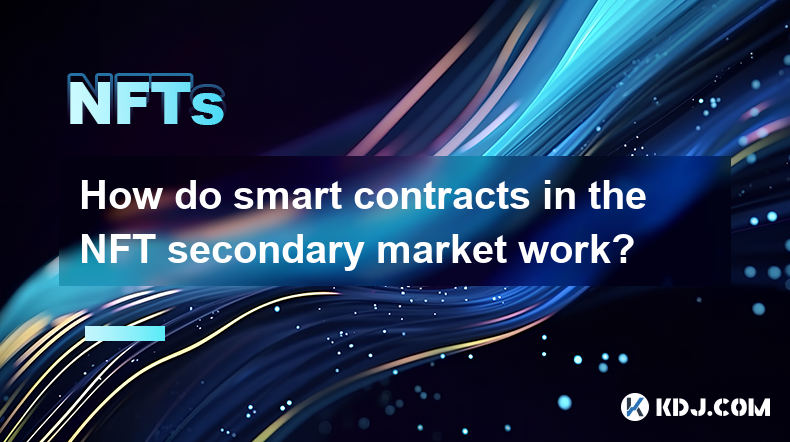
How do smart contracts in the NFT secondary market work?
Apr 03,2025 at 07:14am
Smart contracts play a pivotal role in the NFT secondary market, facilitating seamless transactions and enforcing predefined rules. These self-executing contracts with the terms of the agreement directly written into code are stored on the blockchain. In the context of NFTs, smart contracts automate the buying, selling, and transferring of digital asset...
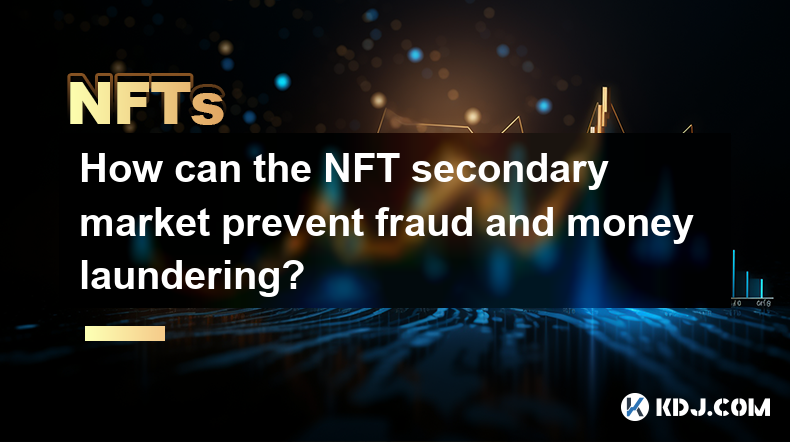
How can the NFT secondary market prevent fraud and money laundering?
Apr 03,2025 at 08:35am
The NFT secondary market has become a thriving hub for digital art and collectibles, but it also faces challenges in preventing fraud and money laundering. To tackle these issues, the market can implement various strategies and technologies to ensure a safer and more transparent trading environment. This article will explore how the NFT secondary market...

How are transaction fees in the NFT secondary market calculated?
Apr 04,2025 at 05:28am
The calculation of transaction fees in the NFT secondary market is a crucial aspect that both buyers and sellers need to understand. These fees can significantly impact the overall cost of transactions and the profits that sellers can make. In this article, we will delve into the various components that make up these fees, how they are calculated, and w...
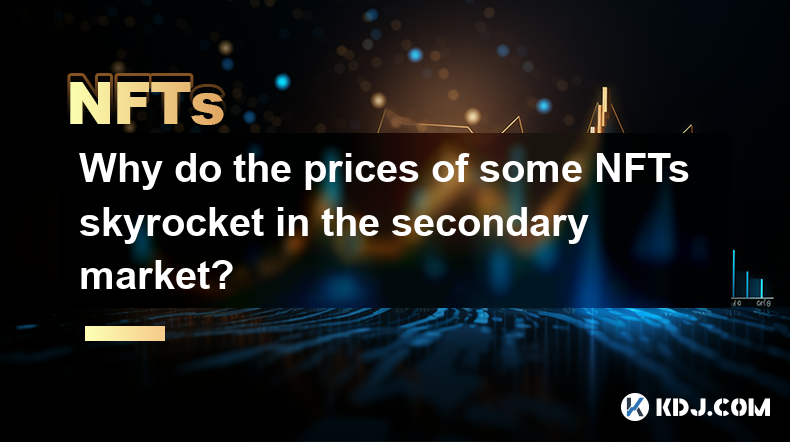
Why do the prices of some NFTs skyrocket in the secondary market?
Apr 06,2025 at 07:08am
The phenomenon of NFT prices skyrocketing in the secondary market is a fascinating aspect of the cryptocurrency and digital art world. Non-Fungible Tokens (NFTs) have taken the digital world by storm, and their value can surge dramatically after initial sales. Several factors contribute to this price surge, including rarity, demand, speculation, and the...
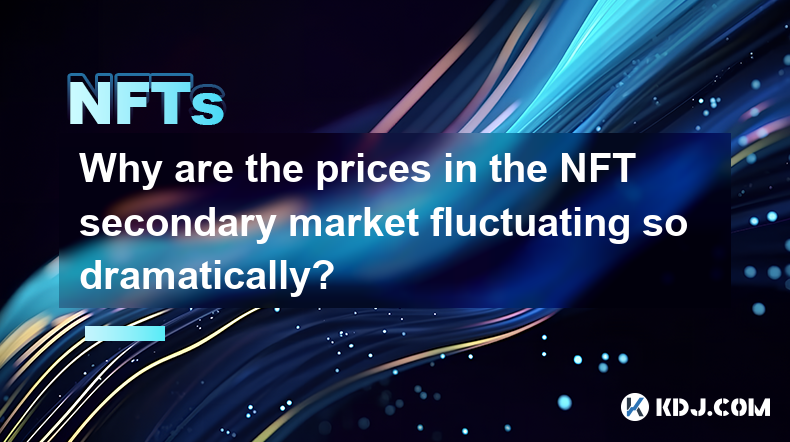
Why are the prices in the NFT secondary market fluctuating so dramatically?
Apr 03,2025 at 10:35pm
The NFT secondary market has been experiencing dramatic price fluctuations, leaving many in the cryptocurrency community puzzled and curious. To understand this phenomenon, it's essential to delve into the factors driving these price movements. From the impact of market sentiment and celebrity endorsements to the role of speculation and the unique natur...
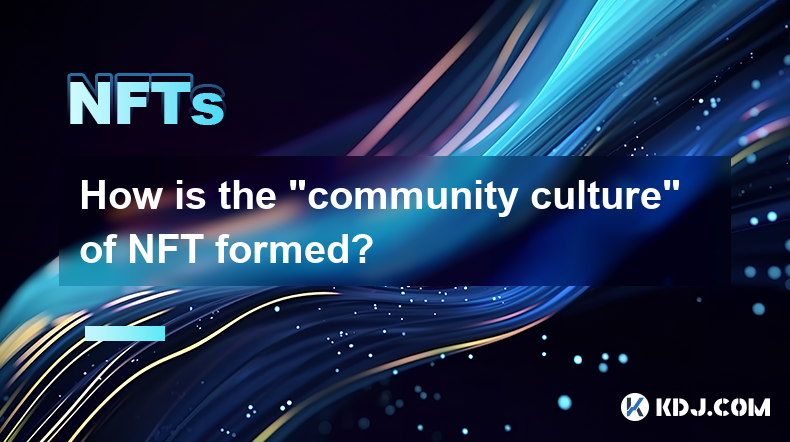
How is the “community culture” of NFT formed?
Apr 03,2025 at 11:07am
The formation of the 'community culture' within the NFT (Non-Fungible Token) space is a fascinating and multi-faceted process. It involves various elements such as shared interests, active engagement, and the creation of a sense of belonging among members. NFT communities often revolve around specific projects or artists, fostering a unique environment ...

How do smart contracts in the NFT secondary market work?
Apr 03,2025 at 07:14am
Smart contracts play a pivotal role in the NFT secondary market, facilitating seamless transactions and enforcing predefined rules. These self-executing contracts with the terms of the agreement directly written into code are stored on the blockchain. In the context of NFTs, smart contracts automate the buying, selling, and transferring of digital asset...

How can the NFT secondary market prevent fraud and money laundering?
Apr 03,2025 at 08:35am
The NFT secondary market has become a thriving hub for digital art and collectibles, but it also faces challenges in preventing fraud and money laundering. To tackle these issues, the market can implement various strategies and technologies to ensure a safer and more transparent trading environment. This article will explore how the NFT secondary market...

How are transaction fees in the NFT secondary market calculated?
Apr 04,2025 at 05:28am
The calculation of transaction fees in the NFT secondary market is a crucial aspect that both buyers and sellers need to understand. These fees can significantly impact the overall cost of transactions and the profits that sellers can make. In this article, we will delve into the various components that make up these fees, how they are calculated, and w...

Why do the prices of some NFTs skyrocket in the secondary market?
Apr 06,2025 at 07:08am
The phenomenon of NFT prices skyrocketing in the secondary market is a fascinating aspect of the cryptocurrency and digital art world. Non-Fungible Tokens (NFTs) have taken the digital world by storm, and their value can surge dramatically after initial sales. Several factors contribute to this price surge, including rarity, demand, speculation, and the...

Why are the prices in the NFT secondary market fluctuating so dramatically?
Apr 03,2025 at 10:35pm
The NFT secondary market has been experiencing dramatic price fluctuations, leaving many in the cryptocurrency community puzzled and curious. To understand this phenomenon, it's essential to delve into the factors driving these price movements. From the impact of market sentiment and celebrity endorsements to the role of speculation and the unique natur...

How is the “community culture” of NFT formed?
Apr 03,2025 at 11:07am
The formation of the 'community culture' within the NFT (Non-Fungible Token) space is a fascinating and multi-faceted process. It involves various elements such as shared interests, active engagement, and the creation of a sense of belonging among members. NFT communities often revolve around specific projects or artists, fostering a unique environment ...
See all articles





















































































